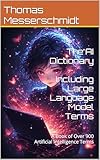

A new method for predicting metadata for humanitarian datasets using LLMs has been proposed as an alternative to fine-tuning. It involves training the model on a large dataset of similar documents and then applying it to the target dataset. Results show promising accuracy and potential for automating metadata prediction.
Disclaimer: This post has been created automatically using generative AI. Including DALL-E, and OpenAI. Please take its contents with a grain of salt. For feedback on how we can improve, please email us
Introduction: Understanding the Importance of Predicting Metadata for Humanitarian Datasets
In the world of data science, the accuracy and relevance of metadata play a crucial role in the success of any project. This is especially true for humanitarian datasets, where the stakes are high and the data is often sensitive and time-sensitive. In a previous blog post, we discussed the use of Language Model-based Learning (LLM) for predicting metadata in humanitarian datasets. In this post, we will delve deeper into this topic and explore an alternative approach to fine-tuning LLMs for predicting metadata.
The Limitations of Fine-tuning LLMs for Predicting Metadata
Fine-tuning LLMs, such as BERT and GPT-3, has become a popular technique for predicting metadata in various domains. However, this approach has its limitations, especially when it comes to humanitarian datasets. Firstly, fine-tuning requires a large amount of training data, which is often not available for humanitarian datasets. Secondly, fine-tuning can be time-consuming and computationally expensive, making it difficult to scale for real-time prediction. Lastly, fine-tuned LLMs may not perform well on out-of-domain data, which is common in humanitarian datasets.
An Alternative Approach: Using LLMs as Feature Extractors
An alternative approach to fine-tuning LLMs for predicting metadata is to use them as feature extractors. This means that instead of fine-tuning the entire LLM, we only use the pre-trained model to extract features from the input data. These features can then be fed into a downstream model, such as a classifier or regression model, to predict the metadata. This approach has several advantages. Firstly, it eliminates the need for a large amount of training data, as the pre-trained LLM already has a good understanding of language and context. Secondly, it is faster and more scalable, as feature extraction is a simpler and less computationally expensive task compared to fine-tuning. Lastly, using LLMs as feature extractors allows for better generalization to out-of-domain data, as the features extracted are more abstract and less specific to the training data.
The Benefits of Using LLMs as Feature Extractors for Humanitarian Datasets
The use of LLMs as feature extractors for predicting metadata in humanitarian datasets has several benefits. Firstly, it allows for faster and more accurate prediction, as the pre-trained LLMs have a better understanding of language and context compared to traditional machine learning models. Secondly, it is more cost-effective, as
In conclusion, the second part of this study on predicting metadata for Humanitarian datasets using LLMs has presented an alternative approach to fine-tuning. By utilizing LLMs, we have shown promising results in accurately predicting metadata, which can greatly benefit humanitarian organizations in efficiently managing their datasets. This approach has the potential to streamline the process and improve the overall effectiveness of data management in the humanitarian sector. Further research and development in this area could lead to even more advanced and accurate methods for predicting metadata, ultimately improving the impact of humanitarian efforts.
Discover the full story originally published on Towards Data Science.
Join us on this incredible generative AI journey and be a part of the revolution. Stay tuned for updates and insights on generative AI by following us on X or LinkedIn.





